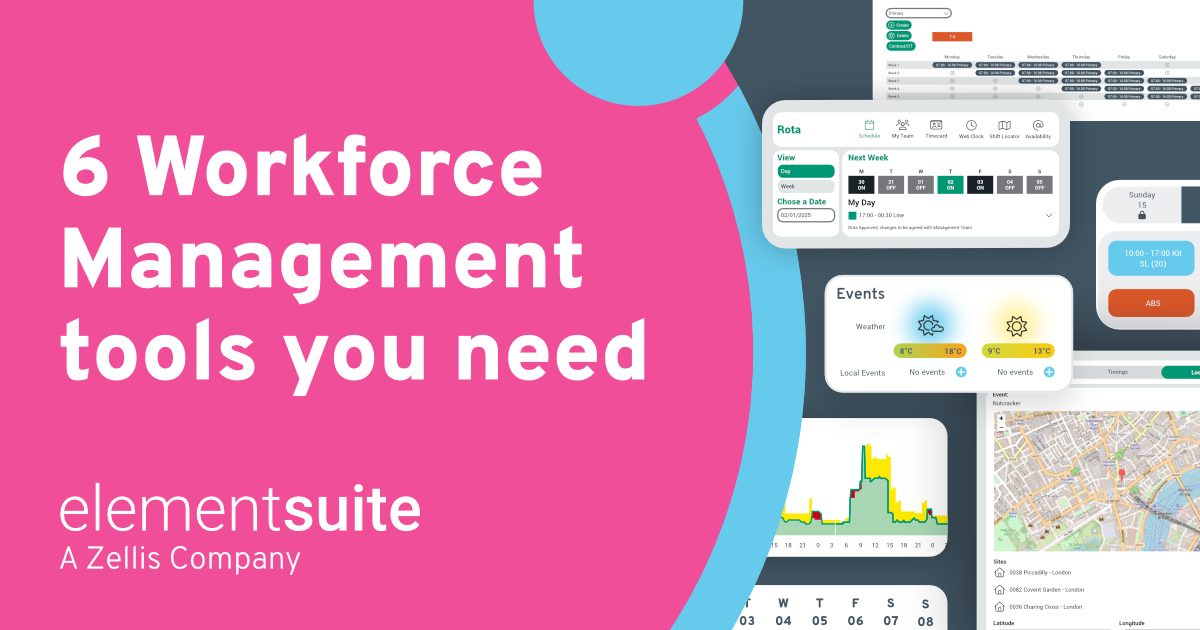Let’s face it, even the smallest staff scheduling error can increase labour costs for hotels. Its fair to say that creating employee rotas is rarely seen as an enjoyable task. It’s a juggling act that requires dexterity, balancing the business needs with available trained resources, staying compliant and delivering profitable customer service.
Whether you’re HR, Operations or finance, there’s a lot of complexity involved in getting this right. Problems with scheduling are constantly quoted as one of the top reason’s employees quit. In fact, there are few things that cause so many headaches for hotels.
Without the right information to hand and the right tools, staff scheduling is a time-consuming logistical nightmare. Before you can rota in a member of the team you have to consider some of the following: –
- HMRC legislation
- Right to Work and Working Time Directive
- Staff leave, time off and other absences
- Guest to staff ratio or staff to room ratio for your location
- Customer service and seasonal demands
- Shift patterns – full-time, part-time, flexible or split
- Hours worked – not exceeding maximum per shift or consecutive shifts
- Scheduling staff who are trained and qualified for shift roles
- Close – open (clopen)
- Security
- Budgets
- Overtime
- Ensuring that employees are paid the correct amount for the work that they do
- Inequal shift distribution – relying on the same few
Do some or all of those sound familiar? Well you are not alone.
Employee turnover in hotels can vary between 30% and 70%, which is exceptionally high, and when the reason most often quoted for leaving is rotas and scheduling, there is a lot of pressure to get it right, first time.
1. Excel hell
This is the number one pitfall to avoid. Studies show that 90% of spreadsheets contain errors and once you have an error you perpetuate it. Excel is great, but not for complex scheduling. If this is your go-to, you should start looking for HR workforce management software to help you make smart and faster scheduling decisions. This may feel like a cost you didn’t expect, but in the long-term you will be saving the business considerably through increased efficiencies, better staff utilisation and lower staff turnover.
2. Paying staff correctly
Seems obvious, but so often employee wage packets come up short because their extra shifts have not been included. Nothing is going to hit staff retention issues faster than failing to get this right. Staff also expect to see consistent, accurate pay for the varying rates of work they have fulfilled. If you are not using automation for check-in, verifying shifts worked, this can add a lag in calculation for payroll runs. Automation is the only way to go, staff can check its all right on their mobile, catching any issues before they happen. Don’t fall down this very large pitfall.
3. Staff shortages
Seems obvious, but if you don’t have the right people, in the right place at the right time, no-one is happy: your guests won’t be happy and neither will your staff.
The obvious solution is to call in back-up staff, cancel days off, but that is not getting to the core of your problem. It could be
- you don’t have enough employees to begin with
- you do have enough staff, but they are not trained to fulfill multiple roles in a single shift and therefore not being fully utilised.
- you have enough employees, but you don’t schedule correctly
The solution could be a combination of all three, but if you are able to train your staff to fulfill multiple roles in a single shift, you can improve staff utilisation. If you then schedule correctly and efficiently you will achieve more with the same number of staff, but they will also be happier.
4. Over-scheduling staff
Staff need downtime, gaps between shifts and breaks. If you don’t give them a break, to refresh, recharge and sleep you can’t expect them to be 100% efficient. While most employees are covered by working time directive and other health and safety regulations, you need to make sure you factor this into your scheduling.
If you’re doing this manually its easy to mistakenly schedule someone in for a 5 am start on one day when you only finished the previous shift at 11 pm. Although many staff might be requesting additional shifts, you need to make sure you do not over-schedule them and cause burn-out. This is where digital tools really come into their own, set-up to automatically handle all these nuances.
5. Flexible scheduling and shift swaps
Hotel schedules should never be written in stone, you need to be flexible and be able to make adjustments at a moment’s notice. So often managers say no to changes because their schedule is so inflexible, but the truth is that its more related to the amount of work and time needed to make a small adjustment or accommodate a shift swap.
Without the 100% visibility of your schedules and your people’s skills and availability, you cannot see the impact one change can make. One dimensional paper or excel planning will restrict your ability to be flexible. That means both for the business and your staff. Shift swaps can really help the personal lives of staff, so make it easy to achieve that. Automation tools allow staff to self-drive shift-swaps, within the parameters of your business model.
6. Outdated scheduling methods
Holding onto outdated scheduling methods and relying on excel a familiar pitfall. Every minute that a manager spends on employee scheduling is time that could be better spent elsewhere. This is a chronic problem, which is compounded when last minute changes and adjustments are needed. If your methods are inflexible and time consuming, they are naturally prone to flaws. Errors with scheduling frustrate staff, but also costs the business money.
Powerful employee scheduling allows managers to quickly build, edit and update schedules. It really doesn’t need to onerous.
7. Communication and notification
Not having the right system in place to notify employees of changes to their scheduling is a major pitfall. Having investing time in changes, whatever the reason, staff need to be notified quickly and easily. You simply can’t phone everyone to let them know about changes, you need to use scheduling software that will automate this communication process, allowing staff to check at any time what their schedule is and notify them of changes. They can also see who else is working on their shift.
Read our latest guide: Hotel HR tips for effective staff management >




